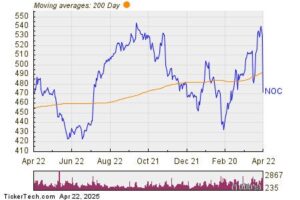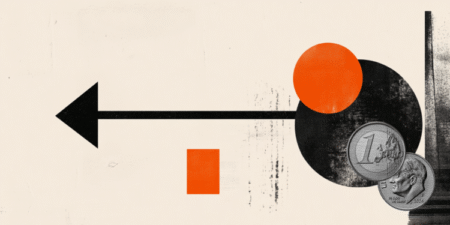- The US Dollar starts to bounce ahead of the US trading session on Tuesday after hitting a three-year low on Monday.
- Markets will want to see if the Fed speakers this Tuesday will defend their Chairman.
- The US Dollar Index stuck sub 100.00 marker as Trump intensifies attacks on Fed Chair Jerome Powell.
The US Dollar Index (DXY), which tracks the performance of the US Dollar (USD) against six major currencies, is bouncing off a three-year low ahead of the US trading session. Markets got caught by surprise as the US Dollar took a hit during Asian trading hours while European and US markets were trading on limited capacity due to the Easter Monday bank holiday. United States President Donald Trump has shifted his focus now to the Federal Reserve (Fed) and lashed out at its Chairman Jerome Powell, calling him “a major loser” for not lowering interest rates while looking at ways to get rid of the Chairman, putting further downward pressure on the Greenback.
On the economic calendar front, all eyes are on the leading Purchasing Managers Index (PMI) preliminary data for April on Wednesday and the Durable Goods orders on Thursday. For this Tuesday, a slew of Fed speakers are lined up to speak, while the less-important Richmond Fed Manufacturing data for April will also be published.
In US equity markets, the focus will be on the Tesla (TSLA) earnings call after the US closing bell, when CEO Elon Musk could announce his departure date from the Department of Government Efficiency (DOGE).
Daily digest market movers: The end of Musk at DOGE?
- At 13:30 GMT, Patrick Harker, President of the Federal Reserve Bank of Philadelphia, participates in a seminar on economic development at the University of Pennsylvania, focusing on regional growth and financial inclusion.
- At 14:00 GMT, Fed Vice Chair Philip Jefferson gives a speech on “Economic mobility and the Dual Mandate” at the Federal Reserve Bank of Philadelphia Economic Mobility Summit, Philadelphia.
- The Richmond Fed Manufacturing Index for April is due in that same time span, around 14:00 GMT. Expectations are for further contraction to -6, coming from -4 in the previous reading.
- Minneapolis Fed President Neel Kashkari will speak around 17:40 GMT as he participates in a Q&A at the US Chamber of Commerce Global Summit in Washington DC.
- Closing remarks for this Tuesday around 22:00 GMT from Federal Reserve Bank Governor Adriana Kugler, who gives a speech on “Transmission of Monetary Policy” at the Heller-Hurwicz Economics Institute 2025 Roundtable, Minneapolis.
- After the US closing bell, all eyes will shift to Tesla earnings. Rumors are that Tesla Chairman Elon Musk is set to announce in the call his departure date from the Department of Government Efficiency (DOGE), NBC reports.
- Equities are looking for direction on Tuesday with minor losses in Europe while US equities are up near 1% on average as they try to rebound from Monday’s losses.
- The CME FedWatch tool shows the chance of an interest rate cut by the Federal Reserve in May’s meeting at 10.4% against no changes at 89.6%. The June meeting is still having around 62% chances for a rate cut.
- The US 10-year yields trade around 4.39% after US bonds have been selling off quite substantially over the past few weeks.
US Dollar Index Technical Analysis: Watch out for the dead cat
The US Dollar Index (DXY) is saying goodbye to the 100.00 marker for now. Incurred losses from Monday are being consolidated this Tuesday while the Relative Strength Index (RSI) is penetrating the oversold area. More downside could be rather limited from here as some sort of technical bounce looks likely before the DXY could drop another leg lower.
On the upside, first resistance comes in at 99.58, which could trigger a firm rejection in any recovery attempts. Should Dollar bulls resurface, look for 100.22 with a break back above 100.00 as a bullish signal of their return. A firm recovery would be a return to 101.90, which acted as head-and-shoulders base line since 2023.
On the other hand, the low at 97.73 is very close by and could snap at any moment. Further below, a rather thin technical support comes in at 96.94, before starting to look at the lower levels of this new price range. These would be at 95.25 and 94.56, which would mean fresh lows not seen since 2022.
US Dollar Index: Daily Chart
Central banks FAQs
Central Banks have a key mandate which is making sure that there is price stability in a country or region. Economies are constantly facing inflation or deflation when prices for certain goods and services are fluctuating. Constant rising prices for the same goods means inflation, constant lowered prices for the same goods means deflation. It is the task of the central bank to keep the demand in line by tweaking its policy rate. For the biggest central banks like the US Federal Reserve (Fed), the European Central Bank (ECB) or the Bank of England (BoE), the mandate is to keep inflation close to 2%.
A central bank has one important tool at its disposal to get inflation higher or lower, and that is by tweaking its benchmark policy rate, commonly known as interest rate. On pre-communicated moments, the central bank will issue a statement with its policy rate and provide additional reasoning on why it is either remaining or changing (cutting or hiking) it. Local banks will adjust their savings and lending rates accordingly, which in turn will make it either harder or easier for people to earn on their savings or for companies to take out loans and make investments in their businesses. When the central bank hikes interest rates substantially, this is called monetary tightening. When it is cutting its benchmark rate, it is called monetary easing.
A central bank is often politically independent. Members of the central bank policy board are passing through a series of panels and hearings before being appointed to a policy board seat. Each member in that board often has a certain conviction on how the central bank should control inflation and the subsequent monetary policy. Members that want a very loose monetary policy, with low rates and cheap lending, to boost the economy substantially while being content to see inflation slightly above 2%, are called ‘doves’. Members that rather want to see higher rates to reward savings and want to keep a lit on inflation at all time are called ‘hawks’ and will not rest until inflation is at or just below 2%.
Normally, there is a chairman or president who leads each meeting, needs to create a consensus between the hawks or doves and has his or her final say when it would come down to a vote split to avoid a 50-50 tie on whether the current policy should be adjusted. The chairman will deliver speeches which often can be followed live, where the current monetary stance and outlook is being communicated. A central bank will try to push forward its monetary policy without triggering violent swings in rates, equities, or its currency. All members of the central bank will channel their stance toward the markets in advance of a policy meeting event. A few days before a policy meeting takes place until the new policy has been communicated, members are forbidden to talk publicly. This is called the blackout period.
Read the full article here
















